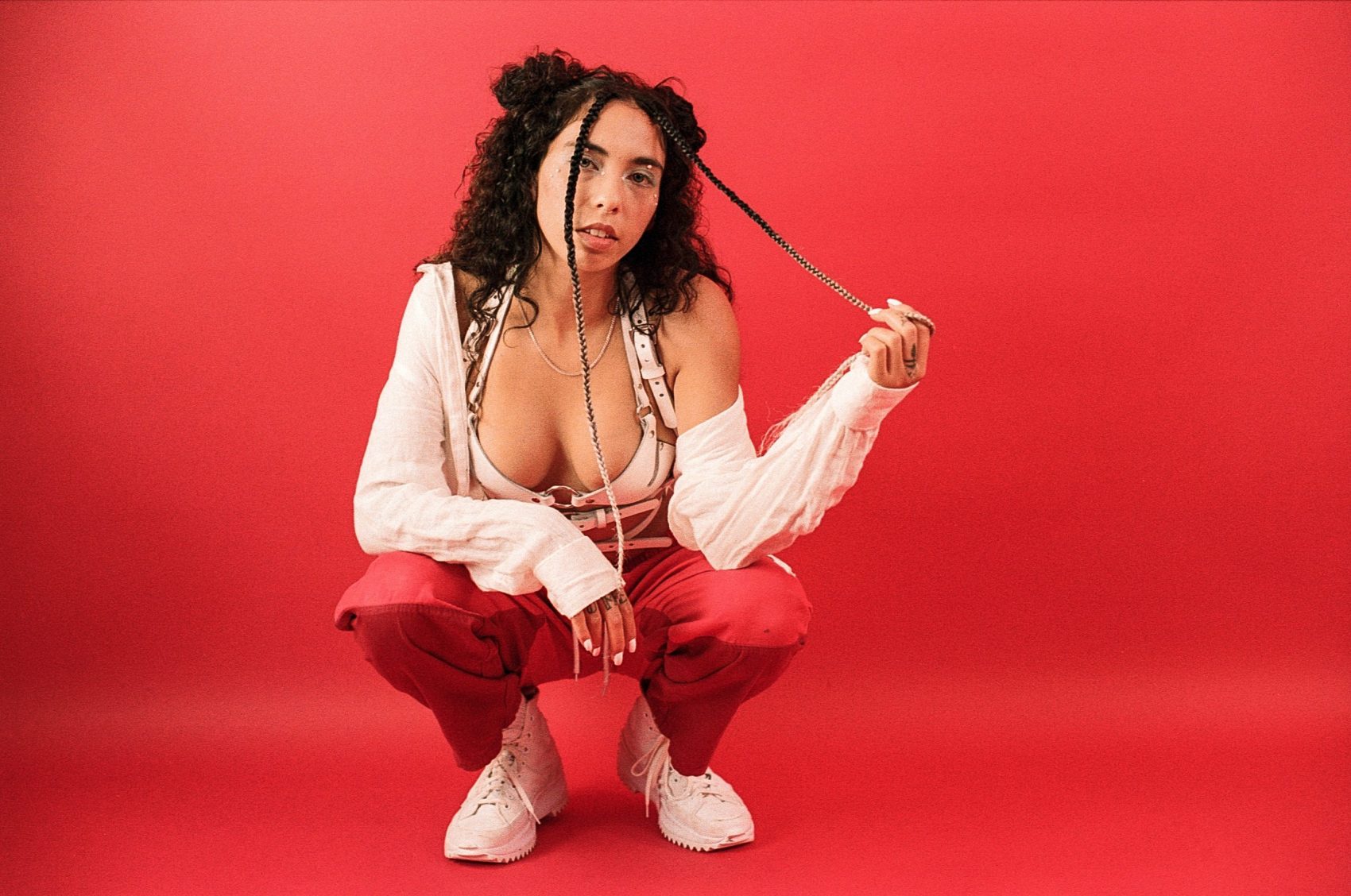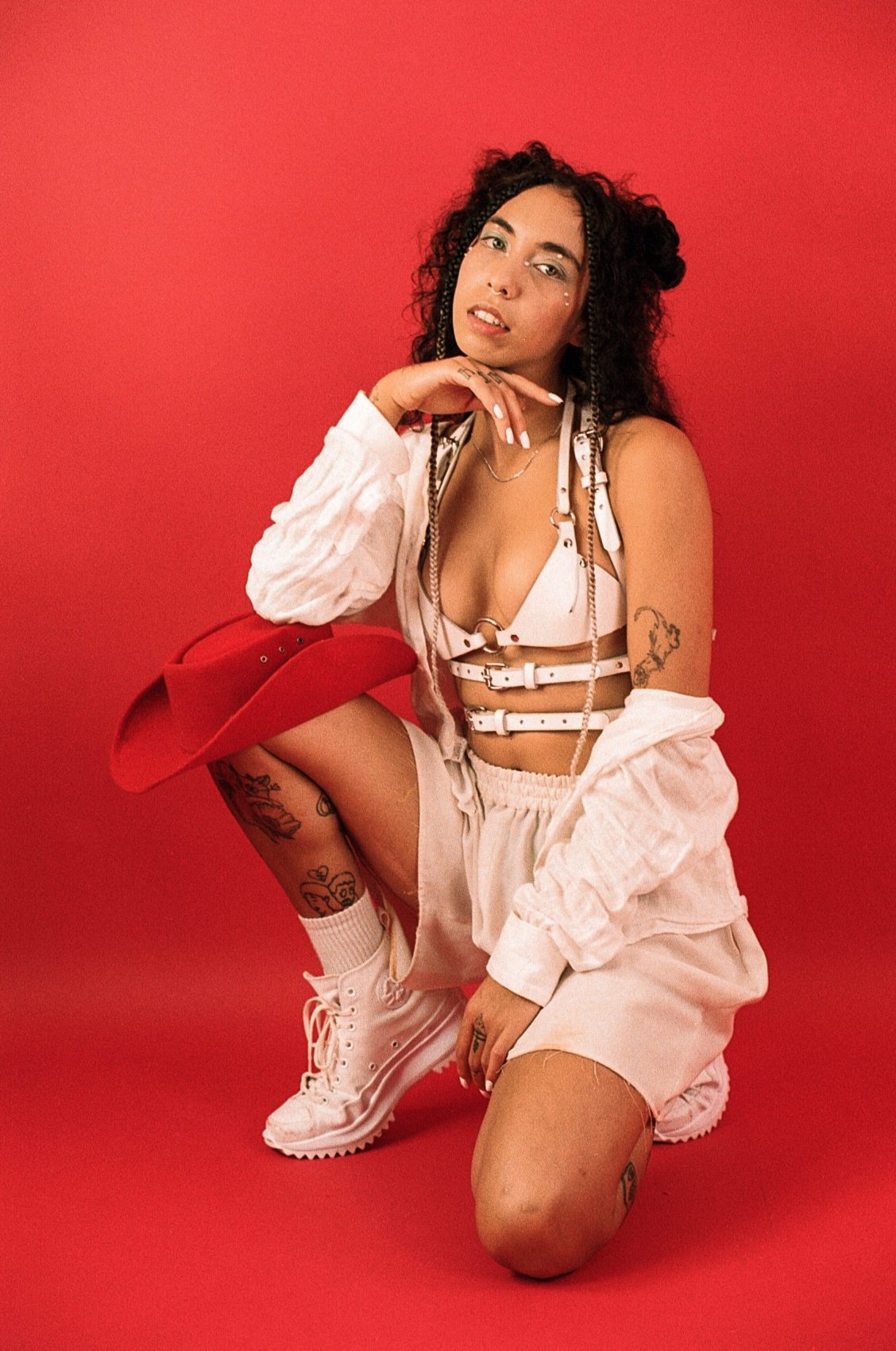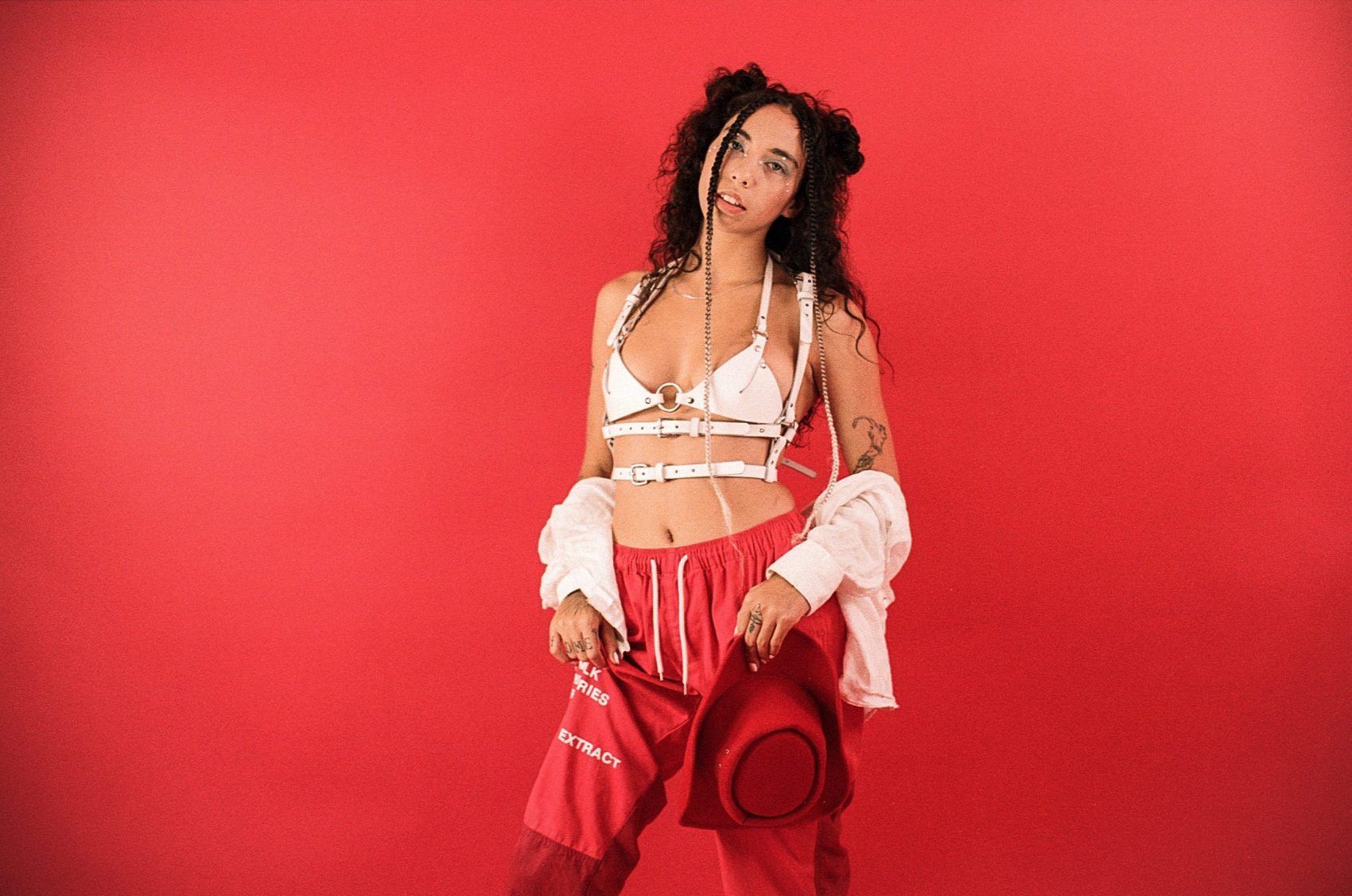
Change is inevitable and Indigo De Souza has accepted that. Since the release of her debut album I Love My Mom in 2018 a lot has shifted. In her musical life, she went from learning how to play with a band and recording music in a living room, to executive producing her sophomore album Any Shape You Take at Sylvan Esso’s studio with Brad Cook (Bon Iver, Waxahatchee). In her personal life, she rediscovered who she was after losing her identity to a relationship and choosing to leave a toxic friend group. More than anything, De Souza has learned to give herself and others grace to morph into new versions of themselves in new seasons of their lives and lead with compassion.
That is the message of De Souza’s newest work, Any Shape You Take. Written around the same time that she wrote her debut record, the songs are tonally similar. However, the growth she’s experienced over the last few years, both as a musician and person, has allowed her to express her pain, grief, and loss, much more exuberantly. Whether it be “Kill Me,” the musical encapsulation of wanting to die while simultaneously wanting to experience the most intense parts of life, “Hold U” the song that honors love in every form, or “Real Pain” that includes the screams of strangers expressing their suffering, De Souza has made a record that speaks to the human experience.
We caught up with De Souza over Zoom to discuss her relationship to change, cake-sitting, and mortality.
This interview has been edited and condensed for length and clarity.
Congratulations on your album! I’d love to start by talking a little bit about your last album in relation to this one. What were the differences in the process between creating and releasing I Love My Mom compared to Any Shape You Take?
It was very different because I Love My Mom was a DIY, bedroom-living room recording, and this new album was much broader within its resources. There were many more people working on this album than the last and just really everything changed. When I made I Love My Mom I had just started playing with a band, so that was new to me. Everything was new and the recordings just kind of happened very naturally and it was before we’d even gone on one tour. Recording this album was very different because I’ve had so much more experience with music in general since then.
I read that the title of the album, Any Shape You Take, was about how you’ve changed musically. I wanted to ask you what your relationship is to change?
I wanted the title to have many different meanings, but it felt really special to call it that when I did because I had undergone so many changes throughout its fruition, but especially during the recording of the album. So many things in my life drastically shifted and I think because of that and the way that I actually rose out of them better than I had been before, I had a lot of faith in myself and my ability to weather change. I just learned a lot from it. I was kind of entering this world in which I was allowing people around me to change and the new people I manifested in my life were allowing me to change forms, in order to show all different parts of myself, and feel accepted for all of those things. So I think I was just really excited about the idea of letting people and events unfold in any way they chose and to have acceptance for that because that’s ultimately the most freeing way you can be.

I’d love to talk about a little bit of the writing of “Kill Me” as well as the concept for the video.
Hell yeah. “Kill Me” was like a subconscious song because I don’t remember writing it at all. I will often record myself on voice memos or on video just writing a song so I can go back later and work on it and listen to what I have written. “Kill Me” was an old video that I found on my Photobooth on my first computer and it was just me in a dark room. I think I was on the floor in the kitchen and I was singing that song. It was just kind of a run-on sentence where I was singing all of the verses and there was no chorus. I think I found it a year after I had made the video, and I felt like I had found a song I didn’t remember writing at all. Then I just wrote down all the lyrics, added a chorus and started playing it live with the band. So yeah that was strange (laughter).
The video was super fun to make. The people who came up with the concept and directed it were really close friends of mine, Emily and Jordan. Jordan I’ve known since I was eleven or so and Emily I’ve known since I was seventeen. There’s just something really special about all of us and our friendship. We have a similar perspective of the world and a similar sense of humor which is really, really, really rare for me (laughter). They came up with the concept based on some kind of descriptors I gave them. I wanted the video to be messy, nihilistic, vibrant, body positive, and dark, but also funny. We just talked about that and we had another idea for a while that was sitting around but it just didn’t feel good enough. Then one night they called me and they were like, “We have it, we know exactly what it needs to be,” and they explained the concept of cake-sitting to me and I had actually already seen videos of cake-sitting. Lindsay Dye is the creator of cake-sitting and I had seen some of her videos before. So I went and watched more of those videos and just got really inspired by it.
So for “Hold U” you filmed it at your house which is a renovated church in the woods. I’d love to hear about that experience because watching the video it seemed like a work of love and acceptance.
The video is mostly just a nod to the community that I have around me now. I kind of left a community that felt like it wasn’t life giving for me and I felt misunderstood and like something was toxic about it. I was alone for a while, and then I was just kind of introduced to this whole network of people that I didn’t even know around me because I had been so closed off in my little toxic bubble. I suddenly realized how many beautiful people there were in Asheville that I hadn’t met before, and I started to weave all those people together and make new friendships. We all bonded a lot during the pandemic. There’s also this artist collective, Different World, which is my friend’s organization. She brought all of her friends, and all the people she knew from Asheville, into the church and we kind of melded our friend worlds together. It was just like this combustion of joy and everyone was just so celebratory of each other and their bodies. Everyone was just putting makeup on each other and being so loving and sweet. It was really special because we thought that we would have to give some direction to the video, but a lot of it was just unscripted joy that was happening in the room. That community has taught me a lot about celebrating each other and holding space for each other in a way that’s kind of boundless and without competition. So I just wanted to fully depict what happens in my house all the time, just in a much more glorified way.
I wanted to talk to you a little bit about “Real Pain” and your choice to incorporate the screams of all of these different people that you asked for audio clips from.
I remember writing the first part of the song and then not knowing where it would go after that. But I felt really excited because the first lyrics in the song felt like the most clear way I’d ever explained the idea of having to move through pain or having to experience everything you’re feeling to move through it. Then, during the pandemic when everybody in the world was feeling a collective thing, it felt like it was maybe the first time that an experience had been so collective between everybody. Although we’re all humans and have been living in the world, that is often overlooked as something collective. People are so quick to separate from other people and decide that you’re actually very different and doing something totally different from each other. But it felt really special because I go about my life seeing everybody as a part of me. We’re all doing this thing that’s very strange and confusing and sad and heavy and beautiful at the same time. The pandemic kind of brought that feeling to the surface for everyone for the first time. That we’re all in this together.
The idea popped into my head to receive voices from as many people as I could who wanted to express themselves, and who wanted to send me things in order to make a collage of voices. Even when it popped into my head, I kind of saw the shape that I wanted it to be in. I wanted it to start small and then get very big and then cut off starkly into something really happy. It just happened very naturally. It was really beautiful to receive all of the recordings. They were really heavy and a lot of them have little personal notes about what people were going through. It just felt really nice to receive those and connect with people during that time.
Listening through the album I realized that a lot of it deals with grief, death and mortality. Do you think that because when something changes there’s often an ending to one thing so that it can become a new thing, that change is always accompanied by some level of grief?
Totally, that’s exactly it. It feels like this constant grief and loss and pain because change carries those things and those things are kind of the greatest teacher. I think for a while that was the part that I didn’t understand. I just wanted to be angry that I was feeling so much pain and I wanted to go against that change. Then I realized that you could actually learn something from it and move through it. If I were to feel all of the pain and grief and actually learn from it, then I will be changed for the better. Then I can move through things quicker if I actually accept the pain that I’m feeling.
So I know that your mom has created both of your album covers. If you’re comfortable I’d love to hear about your relationship with your mother and how it informs your music, if at all.
It’s funny people ask this question about her and my music being related in some way because I called the album I Love My Mom and she painted the paintings. But I think my songs are much more about my friends, my romantic relationships and my relationship to myself. But she has kind of been this symbol of mortality in my songwriting because she is one of the things that kind of triggered this series of realizations when I was in my teens. I guess you would call them existential crises. I kind of came to the idea that we’re actually dying and although I’ve known that my whole life, there were a few moments where it actually clicked that we were dying. That my mom was dying, that everyone I loved would die, and the people that they loved would die. That we would all kind of live in this space where things were beautiful and joy was able to be had, but then we would lose each other in a very real and kind of final way. It was one the most important realizations I’ve ever had because it offered me this new space to be very present in my life and to see people with much more compassion than I’d ever seen them with before. So I think that’s why there’s so much symbolism with my mom because she is one of the things that triggered that. And then also she’s just really, really beautiful. She’s just a really wonderful artist. She has hundreds of paintings, which I’m trying to get her to start an Instagram for because nobody can see her artwork anywhere other than my album covers. She sculpts things and builds things and has always been a very vibrant and colorful person. It’s always been very inspiring, at times embarrassing when I was young, but now fully inspiring (laughter).

CONNECT WITH INDIGO DE SOUZA
INSTAGRAM / TWITTER / SPOTIFY / WEBSITE
story / Sloan Pecchia
photos / Charlie Boss and Kyle Vollmar
